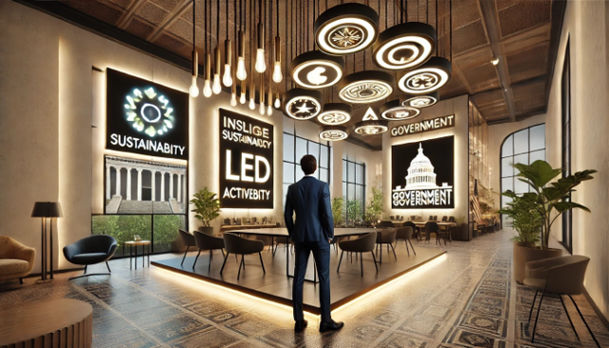
Modern lighting design is defined by more than just innovation. Sustainability policies integrated into modern societies, as well as the socio-political climate and economic condition of a region, play an equally important role.
Modernistic light fixtures and eco-friendly statement pieces, which highlight political movements, are now available everywhere, affirming the fact that politics has an undeniable influence on lighting design.
You can explore stylish fixtures at seuslighting.com that blend modern innovation and history, shaped by different sociopolitical factors. Let’s dive into six astonishing impacts of politics on contemporary lighting design.
1. LED Technology And Innovation Driven by Sustainability Policies
In an attempt to increase energy efficiency, light-supporting governments have developed strong regulations that resulted in the rapid extension of LED technology.
The focus on less energy consumption enabled the design of high-performance, minimalistic, environmentally friendly LED fixtures.
Several nations have gone as far as banning incandescent bulbs, resulting in manufacturers having to meet the higher standards of sustainability.
2. Urban Surveillance and Smart Lighting
Governments use smart street lights equipped with cameras and sensors for public safety, traffic monitoring, and even crowd control. With the rise of smart cities, connected lighting poses a political problem.
These features have now extended to residential lighting with the integration of smart AI and security systems, raising privacy and government surveillance issues.
3. Statement Lighting Inspired By Political Movements
Modern light fixtures, such as neon inspired by feminist movements and LED lights supporting LGBTQ+ rights, have transformed into a medium for political expression.
Protest art employs lighting to create powerful visual statements. Designers today create light fixtures that serve these movements, allowing homeowners to take strong political stances through statement lighting.
ALSO READ: 5 Key Political Events That Boosted the Popularity of Gangnam Karaoke
4. Material Choices and Trade Policies
Tariffs and trade restrictions dictate the use of materials in modern lighting. A government’s tax on imported metals and rare earth elements forces designers to explore alternative materials.
This has broadened the scope for sustainable and locally sourced materials, changing the design of contemporary fixtures.
5. Government Buildings Set Lighting Trends
The architectural lighting of government buildings and facilities usually sets the standards for the industry.
For example, the fixture modernization of LED lighting into historical monuments has created a market for new fittings that are efficient but take into consideration the classic architecture.
Moreover, the use of overpowering lights in the offices or campaigns of politicians can change public opinion about what ‘powerful’ illumination entails.
6. War and Crisis Influence Minimalist Aesthetics
Wars, economic downturns, and political turmoil often result in minimalist and functional designs. With the lack of funds and resources, the focus of lighting designs moves towards practicality.
This is what happened in mid-century modern design and continues today during economically difficult times.
Conclusion
Even politics has an effect on us, from war strategies to immigration policies—how we light our spaces. Modern light fittings capture everything from sustainability policies to political branding and tell us what surrounds them.
So, what happens to be the next big frontier with the forthcoming of new lighting technology? The very same it always has been: politics, activism, and the global agenda.
If you are seeking efficiency, security, symbolic representation, lighting, and a strong political decor, set your assumptions aside.
